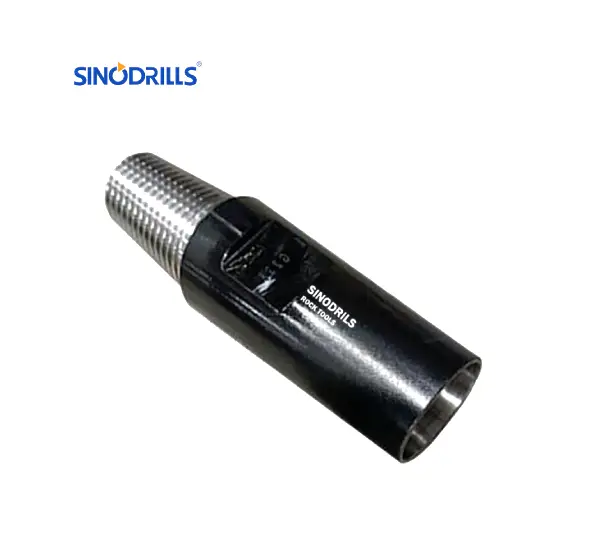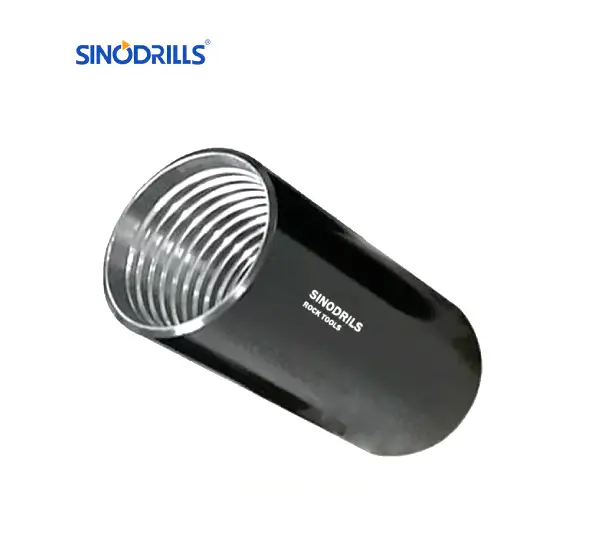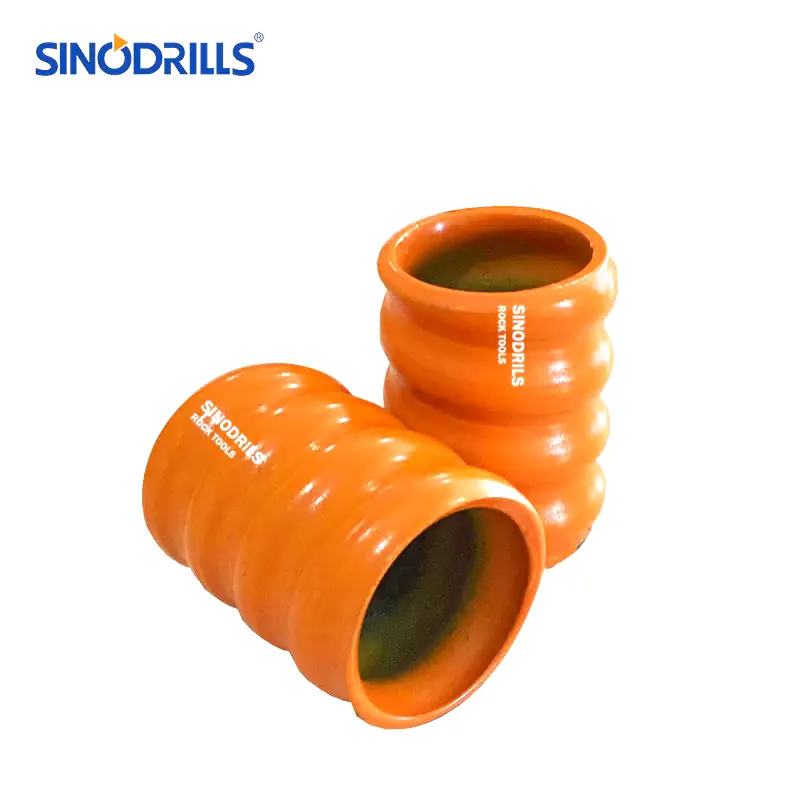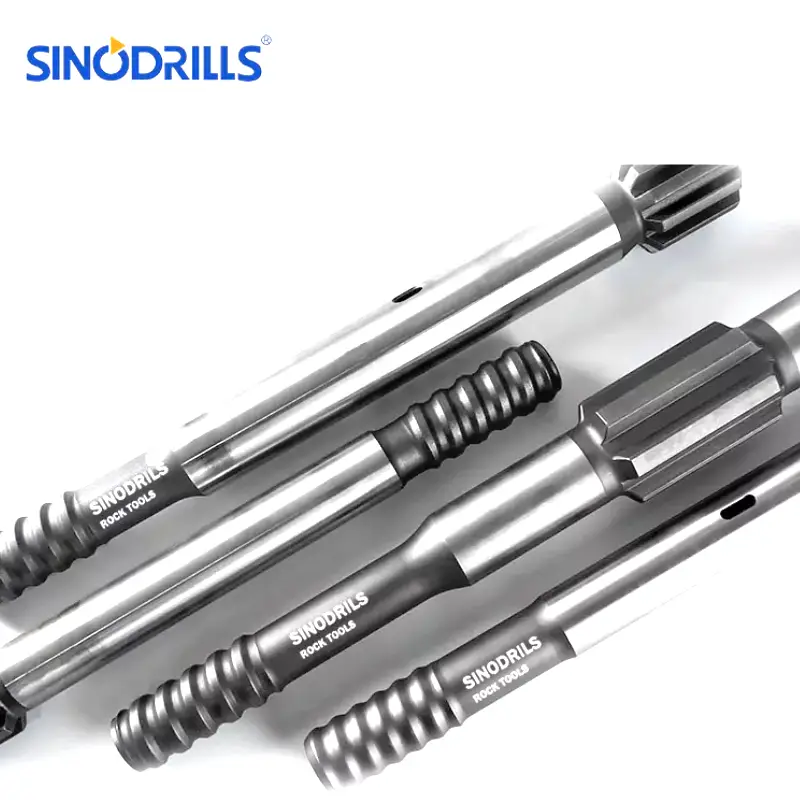Choosing the right shank adapter is a critical decision that directly impacts the efficiency and success of any drilling project. The adapter serves as the vital link between your drill rig and the drill string, responsible for transmitting all of the percussive energy and rotation. A mismatch can lead to significant energy loss and premature tool wear.
In the world of rock drilling, two types of shank adapters dominate the market: threaded and tapered. Understanding the fundamental differences between them is key to optimizing your drilling operations. This article will break down the characteristics, advantages, and ideal applications of each type to help you make an informed choice.
What are Shank Adapters?
Recommended Shank Adapters
Shank adapters, also known as striking bars, are critical components in rock drilling that serve as the vital link between the drill rig and the drill string. Their primary function is to efficiently transmit the high-frequency impact energy, rotation torque, and feed force from the rock drill’s piston into the drill rods and ultimately to the drill bit.
Made from alloy steel, these adapters are engineered to withstand extreme stress and fatigue, ensuring a secure and stable connection that minimizes energy loss and vibrations. They are essential for a wide range of applications, including mining, quarrying, construction, and tunneling, enabling the use of various drill bits and rods with a single drill rig.
Shank Adapter Types
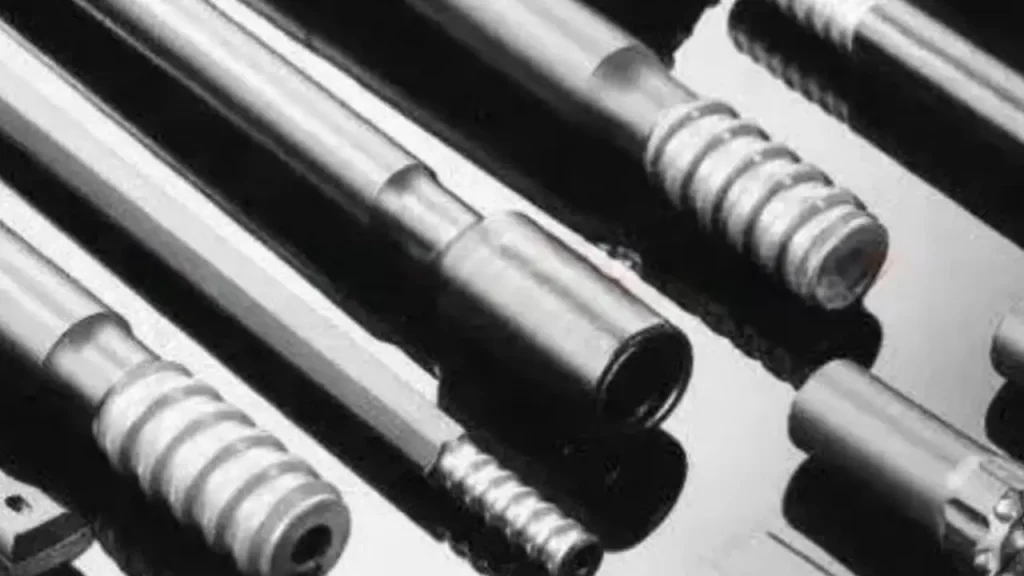
When embarking on any rock drilling project, the choice of equipment is paramount. While drill rigs and bits often steal the spotlight, a seemingly small but crucial component—the shank adapter—plays a vital role in the entire operation. It acts as the intermediary, translating the raw power of the rock drill into effective action at the drill bit.
Understanding the various types of shank adapters available is essential for maximizing efficiency, ensuring safety, and prolonging the life of your valuable tools. This guide will delve into the two primary categories: threaded and tapered, highlighting their distinct designs, applications, and performance benefits to help you make the best choice for your project.
Threaded Shank Adapter
A threaded shank adapter features a threaded connection that screws directly into the drill rod or other components of the drill string. This type of adapter is engineered for a highly secure and rigid connection, which is essential for transmitting powerful percussive and rotational forces with minimal energy loss. The threads are precisely machined to ensure a tight, durable fit, making it a reliable choice for heavy-duty drilling applications.
This robust design is particularly well-suited for top hammer drilling in hard rock formations. The secure threaded joint prevents the adapter from coming loose under extreme stress, reducing wear on the connection and extending the lifespan of both the adapter and the drill string. This stability allows for higher impact energy transfer and more efficient penetration rates.
Tapered Shank Adapter
A tapered shank adapter relies on a tapered friction-fit connection rather than a mechanical thread. The adapter’s tapered end fits snugly into a corresponding tapered hole in the drill bit or rod, creating a powerful and secure bond. This design allows for a quick and easy connection without the need for threading, which can save a significant amount of time during operations.
The tapered connection’s primary advantage is its flexibility and ease of use. Drill bits and rods can be changed out rapidly by simply tapping the adapter to release the bit, making it ideal for projects where different hole sizes or types of bits are frequently required. While it may not provide the same level of rigidity as a threaded connection, its convenience makes it a popular choice for many applications.
Down-the-Hole (DTH) Shank Adapter
A Down-the-Hole (DTH) shank adapter is specifically designed for DTH drilling, where the hammer is located directly behind the drill bit at the bottom of the hole. This type of adapter is engineered to transmit the high air pressure and powerful impacts from the DTH hammer to the bit. It must handle unique forces, including managing air flow for flushing cuttings and resisting high pressure.
The design of a DTH shank adapter is crucial for the overall efficiency of the drilling operation. It ensures a secure and stable connection that minimizes energy loss, which is especially important in deep hole drilling where every ounce of power counts. These adapters are made to be highly durable to withstand the continuous, high-stress conditions inside the borehole.
Integral Shank Adapter
An integral shank adapter is a type of drill rod where the shank adapter and the rod are forged as a single, continuous piece. This design eliminates a separate connection point, which is a common source of wear and potential failure. By removing this weak link, the integral adapter provides superior strength and rigidity for the entire drill string.
This one-piece construction is highly valued for its durability and reliability in demanding applications. While it may lack the modularity of other systems, its streamlined design ensures optimal energy transfer and a longer lifespan. Integral shank adapters are a top choice for projects that require maximum power transmission and stability, such as in hard rock tunneling.
How to Choose Suitable Shank Adapters
Choosing a suitable shank adapter is critical for optimizing drilling performance and ensuring tool longevity. To make the right selection, you must consider several key factors to ensure a perfect match with your equipment and application.
- Match Drill Rig and Hammer: The adapter must be compatible with your specific rock drill’s model and design.
- Identify Drilling Application: The type of drilling (e.g., top hammer, DTH) and rock formation (soft, hard, abrasive) will influence the best adapter type.
- Consider Thread Type: Choose a thread that matches your drill rods and bits (e.g., R32, T38, T45) for a secure, energy-efficient connection.
- Assess Required Durability: For demanding conditions, opt for adapters made from high-grade, heat-treated alloy steel for superior strength and wear resistance.
- Evaluate Cost vs. Performance: While cost is a factor, prioritizing a high-quality adapter can lead to significant long-term savings by reducing downtime and replacement costs.
Conclusion
Ultimately, the choice between a threaded and a tapered shank adapter depends on your specific drilling application. Threaded adapters offer a strong, secure connection ideal for high-impact, heavy-duty work where stability is paramount. In contrast, tapered adapters provide flexibility and rapid tool changes, making them perfect for projects requiring frequent bit swaps.
By understanding the unique benefits of each type—be it the robust security of a threaded connection or the quick versatility of a tapered one—you can significantly enhance your drilling efficiency. Selecting the right adapter ensures maximum energy transfer, reduced downtime, and a longer lifespan for your valuable drilling tools.
For all your drilling needs, we encourage you to get wholesale drill bit shank adapters from our Sinodrills. We offer a comprehensive range of both threaded and tapered adapters, engineered from high-quality materials to meet the most demanding industry standards. Trust us to provide the durable and reliable tools you need for success.

